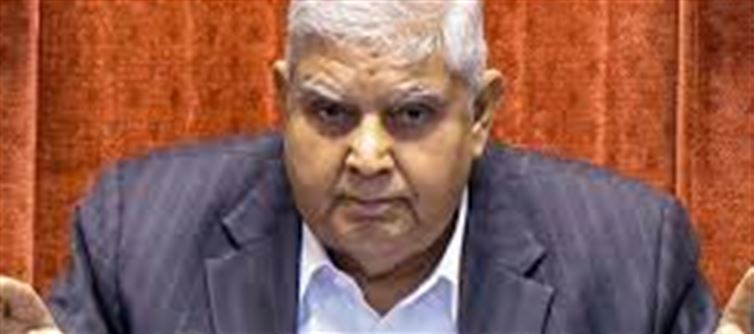
The sudden resignation of Vice President jagdeep dhankhar has created a stir in the country's politics on Monday. His removal from the constitutional post with 2 years of tenure remaining is being considered indirect. monday was the first day of the monsoon session, at that time jagdeep dhankhar was seen fully active. At the same time, he has cited health in his resignation.
After the resignation of jagdeep dhankhar, the history of indian politics has also started coming into discussion. If we look at the constitutional history of india, till now there have been six such Vice Presidents who have completed the journey of the President of the country. One of these leaders was also the congress President, while someone won the Vice President election as an independent candidate. In such a situation, let us tell you today about those faces who traveled from the post of Vice President to the highest constitutional post of the country.
Dr. sarvepalli radhakrishnan (1952-62 Vice President, 1962-67 President)
Dr. Radhakrishnan is considered a symbol of thoughtfulness in indian politics. Radhakrishnan, who had a deep grasp of philosophy, was India's first ambassador to the Soviet Union at the time of independence. When the post of Vice President was created for the first time in india in 1952, he was trusted. He maintained the dignity of this post for 10 years and then became the second President of the country in 1962. To honor Dr. sarvepalli radhakrishnan, his birthday is celebrated every year as Teacher's Day.
Dr. zakir hussain (Vice President 1962-67, President 67-69)
Dr. zakir hussain, who was the co-founder and Vice Chancellor of Jamia Millia Islamia, is known for his profound contribution in the field of education and social service. He established Jamia Millia Islamia with a salary of just Rs 80. Dr. zakir hussain became the Vice President in 1962 and took oath as the first Muslim President of the country in 1967. However, his tenure remained incomplete as he died in Rashtrapati Bhavan in 1969.
VV Giri (Vice President 1967-69, President 1969-74)
Varahagiri venkat Giri, also known as VV Giri, is considered a unique example in indian politics. He resigned from the post of Vice President in 1969 and contested the presidential election as an independent candidate and won. Apart from this, he had also been the governor of many states and the President of the All india Trade Union Congress. During his tenure, major decisions like the shimla Agreement and nationalization of banks were taken. In 1975, he was also awarded the Bharat Ratna.
R. Venkataraman (Vice President 1984-87, President 1987-92)
R. Venkataraman, a lawyer and freedom fighter by profession, held responsibilities on many important fronts in his career. He was also the Union Finance and Defense minister of India. After this, he became the Vice President in 1984 and then the eighth President of the country in 1987. His tenure is known for political stability and maintaining balance between the executive and the judiciary.
Dr. shankar Dayal Sharma (1987-92 Vice President, 1992-97 President)
Shankar Dayal Sharma, former chief minister of Madhya Pradesh, Union minister and governor of many states, was elected Vice President unopposed in 1987. It is believed that his humble nature connected him with the public. In 1992, he contested for the post of President and won. His tenure is considered to be peaceful but he played an important role in protecting constitutional values. Apart from this, Dr. shankar Dayal Sharma was the General Secretary of congress from 1968 to 1972 and was elected President of the indian national congress from 1972 to 1974.
K. R. Narayanan 1992-97 Vice President, 1997-2002 President)
K. R. Narayanan was the first Dalit officer of the indian Foreign service and later entered politics at the behest of Indira Gandhi. K R Narayanan was elected as a lok sabha mp thrice and was also a Union Minister. He became the Vice President in 1992 and created history by taking oath as the country's first Dalit President in 1997. He took the post of President from a passive symbol to an active role in constitutional evaluation and public interest.




 click and follow Indiaherald WhatsApp channel
click and follow Indiaherald WhatsApp channel